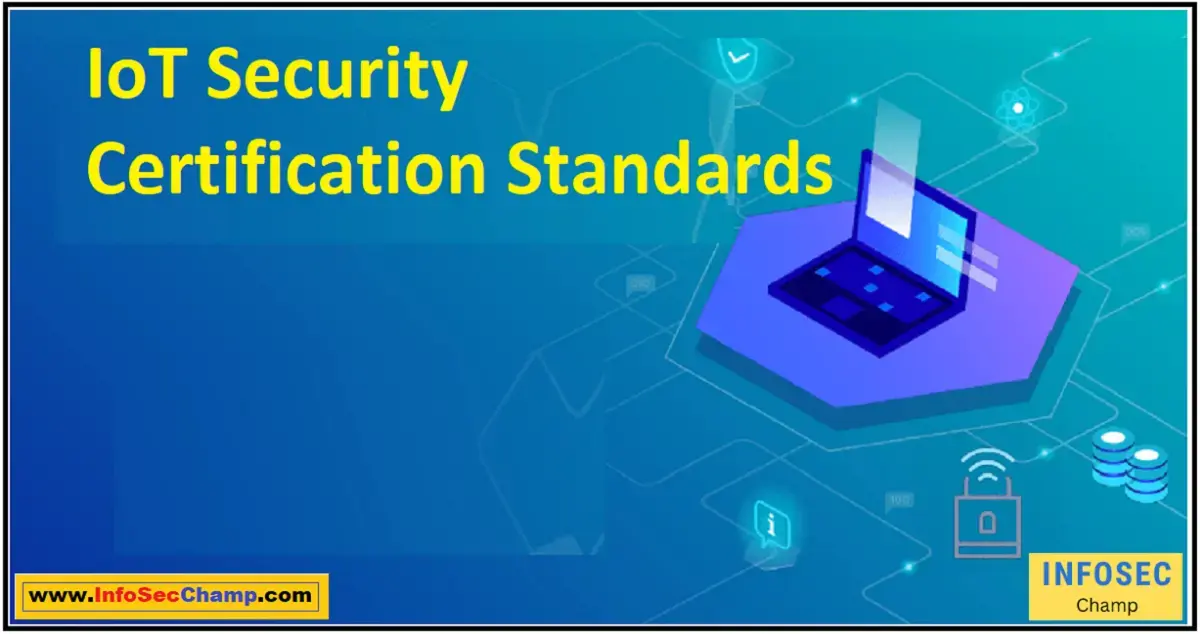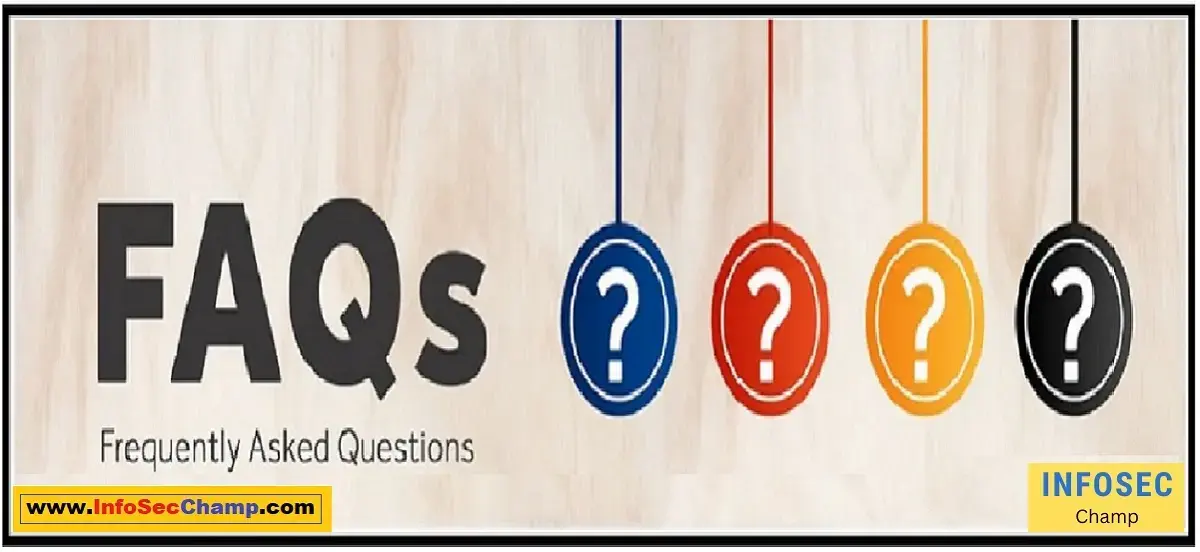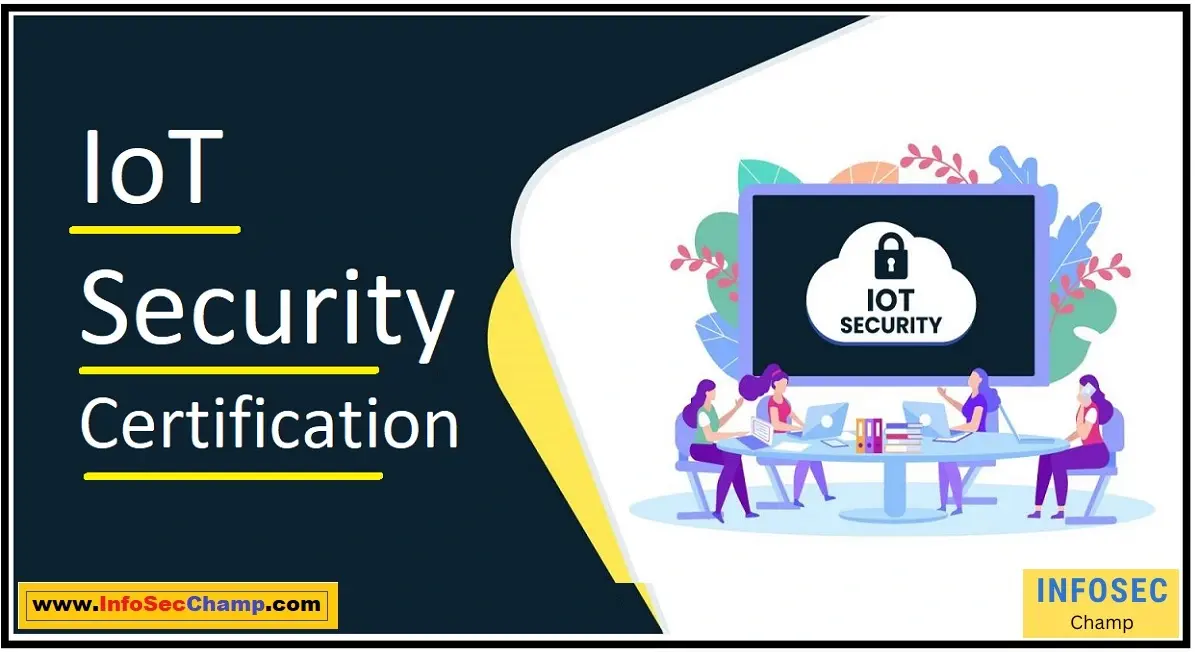The increasing number of smart devices connecting to the internet has raised concerns over IoT security certification. With many cases of data breaches and cyber-attacks related to unsecured IoT devices and networks, this issue has become critical for both individuals and organizations. To address this growing concern, many companies have developed IoT security certification programs, but which one is the most reliable and effective?
While IoT security certification is crucial, it is just one piece of the puzzle. IoT device security and best practices are equally important in ensuring the privacy and safety of users. Companies and individuals should be aware of IoT security issues and adopt standard measures to prevent unauthorized access and data manipulation. With the development of IoT security standards, such as ISO/IEC 27001 and NIST Cybersecurity Framework, the industry is moving towards a more resilient IoT ecosystem. Join the conversation and learn more about IoT security certification and best practices to secure your connected devices.
What is IoT security certification and why is it important for businesses and individuals?
The importance of IoT security certification is rising in the world of linked devices. These are some important things to think about:
- IoT devices are vulnerable to cyber attacks: As more and more devices are connected to the internet, the risk of cyberattacks is rising. IoT devices may lack robust security protections, making them particularly vulnerable.
- Certification can help prevent attacks: By establishing standards for security procedures, IoT security certification can assist ensure that systems and devices are secure. Access controls, encryption, and authentication are a few examples of this.
- Standards vary by industry: Depending on the industry and the type of device, certification standards may change. For instance, medical equipment could need different specifications than smart home gadgets.
- Certification can provide peace of mind: Both organizations and people may feel more secure knowing that devices have received certification. They may feel more confident that their gadgets are safe and less vulnerable to hacking as a result.
- Compliance may be required: In some industries, legal or regulatory requirements may make certification necessary. For instance, in order to be marketed or utilized, some medical device types may need to be certified.
In general, IoT security certification is a crucial tool for making sure that connected devices are safe and less susceptible to cyberattacks. It can assist organizations and people in putting their trust in their devices and adhering to applicable laws.
How to ensure the security of IoT devices in your network?
The risk of security breaches grows along with the proliferation of IoT devices. In order to safeguard your network and stop illegal access to your critical data, it is essential to ensure the security of your IoT devices. The following strategies can help you protect the IoT devices in your network:
- Use secure passwords: Ensure that all IoT devices are protected using strong, improbable passwords. For every device, use a different, complicated password, and change it periodically.
- Keep devices updated: To fix any vulnerabilities and enhance security, update the firmware and software on all IoT devices on a regular basis.
- Segment your network: To keep IoT devices apart from important systems and data, consider segmenting your network. In addition to lowering the possibility of unwanted access to sensitive data, this can lessen the effect of a security breach.
- Monitor device activity: To keep tabs on all IoT device activity on your network, use network monitoring solutions. This can assist in spotting any suspicious activity and avoiding security lapses.
- Use encryption: Take into account securing data sent between IoT devices and other systems on your network with encryption technologies. This can preserve the confidentiality of your data and assist prevent illegal access to it.
- IImplement access controls: For all IoT devices, access controls can be used to offer user authentication and authorization. Only allow access to approved users and equipment.
- Train employees: Informing staff on IoT device security best practices and the dangers these devices pose is important. Provide instruction on how to spot and handle potential security threats.
You may safeguard your network and stop unauthorized access to your sensitive data by adhering to these best practices for IoT device security. Making sure IoT devices are secure is crucial given their exponential expansion, and failing to do so could have negative effects on your company.
Who should be responsible for ensuring the security of IoT devices in a company?
Here are a few of the major participants who ought to be involved:
- IT department: The security of IoT devices is greatly aided by the IT department. They are in charge of putting security policies into action, updating firmware, and raising public awareness of safe security procedures.
- Device manufacturers: It is also the duty of IoT device manufacturers to guarantee the security of their wares. They must to incorporate security features into their goods and frequently publish updates to fix any flaws.
- Network administrators: These individuals oversee the IoT devices’ communication network. To avoid illegal access, they must make sure the network is secure and set up correctly.
- Employees: Workers who use IoT devices at work should be informed of the hazards and how they can help keep the network secure. Best habits like avoiding sharing passwords and being cautious when clicking links should be taught to them.
- Security team: A specialized security team may keep an eye on the network for any indications of shady behavior and react to security breaches.
Overall, cooperation and coordination between many corporate departments are needed to ensure the security of IoT devices. To protect the hardware, the network, and the data of the business, everyone has a responsibility. Together, we can build a solid security posture that reduces the risk of attacks and safeguards the company’s data.
When to conduct security audits on IoT devices and networks?
When selecting when to perform security audits on IoT networks and devices, there are a few important aspects to take into account. In particular, bear in mind the following:
- Timing: Security audits should be performed on a regular basis, however, the frequency will vary depending on the device or network. For instance, a high-traffic network with serious security issues could require more frequent auditing than a single device in a low-security setting.
- Risk factors: Another important issue to take into account is the degree of risk posed by the device or network. A device or network should be audited as quickly as possible to find and fix any problems if there are known vulnerabilities or potential dangers.
- Updates or changes: To make sure a device or network is still secure after a major change (like a software update or a physical move), it’s crucial to carry out a security audit.
- Compliance requirements: There may be certain compliance requirements that specify when security audits must be carried out, depending on the industry or organization. To prevent possible fines or penalties, it’s crucial to stay current on all applicable legislation.
Generally, doing security audits frequently and proactively is preferable to waiting until a problem manifests. You may help discover possible concerns early on and take action to alleviate them before they become significant issues by prioritizing security and remaining attentive.

Where can businesses find reliable information on IoT security issues?
The following sources provide trustworthy information on IoT security concerns for businesses:
- Industry associations and forums: Institutions and forums including the National Cybersecurity Center of Excellence, Industrial Internet Consortium, and Open Connectivity Foundation disseminate knowledge on IoT security concerns and best practices.
- Government agencies: National governments and regulatory organizations like the European Union Agency for Cybersecurity (ENISA) and the National Institute of Standards and Technology (NIST) offer advice and information on IoT security.
- Security solution providers: Organizations with a focus on IoT security, like Cisco, IBM, and Symantec, offer resources and information on IoT security concerns.
- Security research firms: Organizations like Gartner, IDC, and Forrester offer analysis and insights on IoT security trends and threats.
- Training and awareness programs: Numerous organizations provide businesses with training and awareness initiatives on IoT security risks. The IoT Security Foundation, for instance, provides training programs and certifications for both individuals and businesses.
Businesses should constantly check these sources to be informed of the most recent IoT security dangers and countermeasures. Businesses may do this to greatly lower the danger of IoT-related breaches and safeguard themselves and their clients from possible monetary and reputational harm.
Why is it important to stay informed about IoT security issues, best practices, and standards?
Being knowledgeable about IoT security challenges, best practices, and standards is now more crucial than ever as we move towards greater connectivity and automation. If you don’t, you risk serious violations, expensive punishments, and eroded customer confidence. Following up on information is crucial for the following reasons:
- Protect Against Cyberattacks: IoT devices are susceptible to cyberattacks since they are online, especially if their passwords are weak or defaulted. You can better defend yourself against potential attacks like malware, phishing, and ransomware with the latest information on IoT security challenges, best practices, and standards.
- Meet Compliance Standards: Various industries have their own security standards, and failing to do so can result in severe financial fines, legal action, and reputational harm. You may ensure compliance and take a preventative approach to security by being educated about IoT security rules.
- Maintain Customer Trust: Long-term business success depends on maintaining customer trust. You can show that you are dedicated to safeguarding the data of your consumers while minimizing the chance that a security breach would harm your brand by keeping up with IoT security.
- Enhance Operational Efficiency: By implementing the best IoT security standards, you may work to increase operational efficiency. The administration and organization of the digital infrastructure can be improved through procedures like device authentication, data encryption, and security audits.
- Future-proof Your Business: Security dangers increase as technology advances. Being informed will help you future-proof your company and make sure you’re ready for any upcoming technological advancements.
In sum, remaining up to date on IoT security concerns, best practices, and standards is essential for any organization trying to defend against cyberattacks, uphold consumer trust, accomplish compliance, improve operational efficiency, and future-proof their business. By doing this, you can take a preventative approach to security and steer clear of the expensive repercussions of a breach.
What are some common IoT security issues and how can they be addressed?
The Internet of Things, or IoT, has transformed the way we work, play, and live by connecting people, devices, and data. As a result of the massive production, transmission, and storage of sensitive data, this revolution is also accompanied by security issues. These are some typical IoT security concerns and solutions:
- Weak passwords -One of the most prevalent problems with IoT security is weak passwords. To ensure that each device has a strong password that is difficult to crack, a strong password policy should be put into place.
- Unsecured networks – Devices and data can be accessed by unauthorized people through unprotected networks, which is another frequent problem. To solve this problem, establish firewalls and employ strong encryption protocols to make the network safe.
- Lack of updates IoT-connected devices require regular upgrades to fix any faults or security holes. To address security issues, it is crucial to maintain all devices with the most recent firmware.
- Lack of data encryption – Data that is kept in the cloud or communicated between devices needs to be protected, so encryption is crucial. To protect data, make sure encryption procedures are in place.
- Lack of device control – A lack of security measures prevents some IoT devices from being controlled. Create control frameworks, such as role-based access control and access control with access authorization, to guarantee that only authorized users may access the IoT network.
- Insider threats—Another aspect of IoT security is preventing insider threats. Adopt appropriate security measures to guarantee that staff only have limited access to sensitive information or equipment.
Finally, safeguarding an IoT network necessitates a complete strategy that incorporates a strict password policy, frequent software upgrades, encryption techniques, control frameworks, and employee training. We can take advantage of the advantages of IoT while also maintaining the security of our equipment and data if these problems are resolved.
How to implement IoT security best practices in a company?
Securing these devices is of utmost importance in the linked world of today, where IoT gadgets are spreading like wildfire. The following are excellent practices for implementing IoT security in a business:
- Understand the risks: Before implementing security solutions, it’s important to recognize the possible security threats provided by IoT devices. Businesses must assess the devices that might connect to their network, investigate the sorts of data being accessed, and pinpoint potential avenues of entry for attackers.
- Implement strong passwords and device authentication: Security is always greatly threatened by weak passwords. Hence, one of the most fundamental yet essential ways to protect IoT devices is by using strong passwords. Devices must also go through adequate authentication, allowing them access only when the user provides the correct authentication.
- Conduct regular updates and patches: IoT devices need to have regular updates and patches applied in order to maintain security. It is becoming more and more crucial to keep up with the most recent security standards because many of these security precautions quickly become obsolete.
- Use firewalls: Firewalls are crucial for IoT security because they can discriminate between safe IoT traffic and traffic that is malicious. Firewalls must be implemented by businesses both at the network and application (device) levels.
- Implement agile security measures: Businesses must employ security measures that continuously assess, detect and block security threats. Security event correlation and intrusion prevention systems are some of these measures.
- Maintain continuous security monitoring: Monitoring security protocols helps businesses be on the lookout for emerging dangers. Continuous monitoring provides prompt detection and remediation of vulnerabilities in IoT devices, which are vulnerable.
- Develop an incident response plan: Create an incident response strategy. Last but not least, businesses need to create an incident response plan that specifies what to do in the event of a security threat or breach. This plan should include steps for managing and reducing risks, contact information for all interested parties, and a strategy for keeping everyone updated on the situation.
IoT security is crucial for businesses in the connected world of today, to sum up. Companies may secure their IoT devices and reduce the hazards posed by these devices by applying these recommended practices. Companies may stay one step ahead of potential security threats by continuously enhancing IoT security measures, such as using intelligent solutions.

FAQs:
What is IoT security and why is it important?
IoT security refers to the steps taken to safeguard the Internet of Things (IoT) linked devices, networks, and data. It is crucial because an unreliable IoT system can result in bodily injury, data theft, and privacy violations.
Can IoT devices be hacked?
A: If an Internet of Things device is not built or configured securely, it may be hacked. Many Internet of Things (IoT) devices have obsolete software, weak passwords, or security flaws that can be used by hackers.
How can I protect my IoT devices from cyber-attacks?
A: By updating your IoT devices with the most recent security patches and software, changing the default passwords, and avoiding public Wi-Fi networks, you can defend them against cyberattacks. Additionally, you may limit the data that your devices can collect and exchange, partition your IoT networks, and employ reliable encryption.
What are some common IoT security issues?
A: Device weaknesses, a lack of encryption, shoddy authentication procedures, and unsafe data storage are a few of the frequent IoT security challenges.
Is there a universal IoT security certification?
A: No, there is not yet a global IoT security certification. Yet, there are a number of accreditations and specifications, including ISO/IEC 27001 and the IoT Security Foundation Certification, that deal with particular facets of IoT security.
What are IoT security standards?
A: Internet of Things (IoT) security standards are prescriptions and recommendations created to guarantee the security of IoT systems and devices.
What is the ISO standard for IoT security?
A: ISO/IEC 27030:2015, which offers instructions for protecting IoT systems and data, is the ISO standard for IoT security.
What are the 4 levels of IoT security?
A: The four tiers of IoT security are application security, cloud and server security, communication network security, and device-level security.
What is the IEEE standard for IoT?
A: IEEE P2413 is the IoT standard developed by the IEEE, and it offers a foundation for IoT architecture and interoperability.

